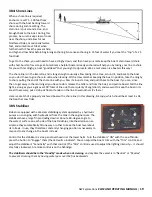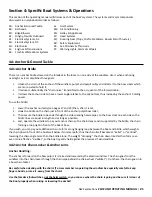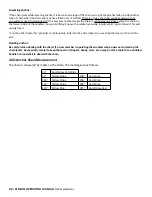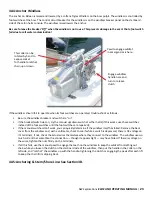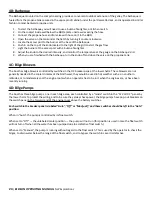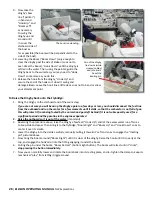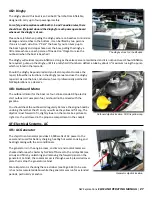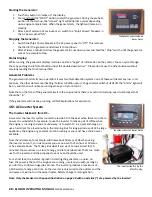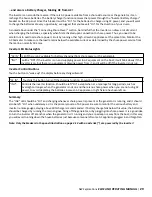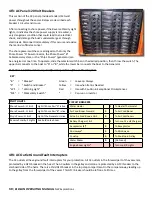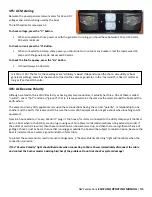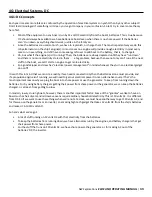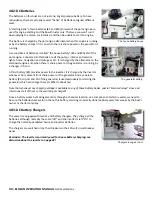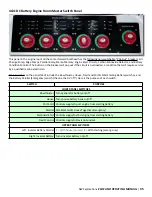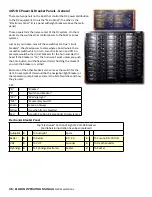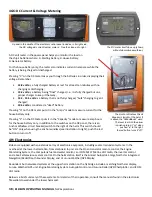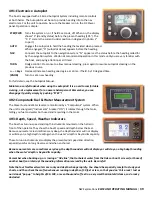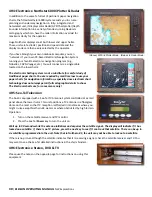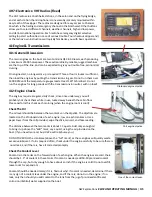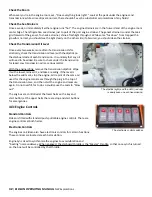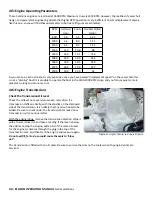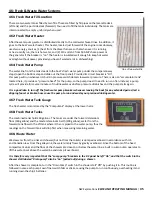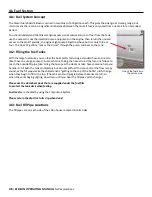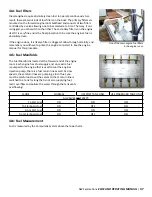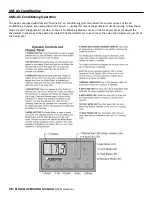
NW Explorations
ELDEAN OPERATING MANUAL
|
33
4G: Electrical Systems, DC
4G1: DC Concepts
Each year it seems more folks are confused by the operation of electrical systems on yachts than by any other subject!
Don’t feel discouraged if something isn’t clear: you’ve got company in your confusion. So let’s try to cover some theory
here first.
•
Most of the equipment on any boat is run by 12 volt DC electricity from the boat’s batteries. This is true because
DC should always be available: we have batteries aboard even when there is no shore power! If the batteries
aren’t run down, everything should work, just like in the family car.
•
Since the batteries are used so much, we have to replenish, or charge them. The most important way we do this
is by alternators on the ship’s engine(s). In most cases one engine will provide enough electricity in most every
case to run everything, and still have some energy left over to add back to the battery, that is, to charge it.
•
Ah, but what if the engine(s) isn’t running? Then, the batteries are slowly depleted until they have “run down”
and there is no more electricity stored in them . . . a big problem, because then we not only can’t run all the neat
stuff on the boat, we can’t start an engine to get more electricity.
•
So a good skipper and crew has “electrical power management” in mind whenever they turn an electrical gadget
on or off!
It is with this in mind that we can cite a reality: If we need more electricity than the batteries alone must provide, and
if a propulsion engine isn’t running, we will need to get our electrical power from an alternative source! That’s the
most important reason why we plug the boat in to shore power or use the generator: To keep from running down the
batteries. For by using battery chargers getting their power from shore power or the generator, we can keep the batteries
charged, or, at least, from getting too low.
In modern, luxury cruising boats, however, there is another important factor: Some of the “goodies” we like to have on
board such as hair dryers and microwave ovens require ordinary household electricity. This is 110 volts AC. It is different
from DC. So if we want to use these things when we’re not at a dock, we must have another way to get 110 volts AC, and
for this we use the generator or an inverter, an amazing high tech gadget that takes 12 volts DC from the ship’s batteries
and makes it into 110 volts AC!
So here’s what we’ve got:
•
A lot of stuff running on 12 volts DC with that electricity from the batteries.
•
To keep the batteries from running down, we have alternators run by the engines, and battery chargers that get
their power from shore power.
•
For the stuff that runs on 110 volts AC, we have shore power, the generator, or, for making AC out of the
batteries’ DC, the inverter.

